#islamic illumination
Photo

Title: Page of Calligraphy from the Kulliyat of Sa'di
Calligrapher: Abd al-Majid Taleqani (Iranian, Taleqan 1737–71 Isfahan)
Date: 18th century
Geography: Attributed to Iran
Medium: Ink, opaque watercolor, and gold on paper
38 notes
·
View notes
Text

You can click the link to access online courses: https://bit.ly/3z11h0b. There are currently two Islamic Illumination courses available and a fashion art online course.
click the link above to access the page and read more information about them.
#Online courses#fashion art#fashion illustration#teachable#workshops#art workshop#art courses#islamic art#islamic patterns#islamic illumination#tezhip#classic art#Turkish art#Motifs drawing#floral Art course#Rumi Art course
5 notes
·
View notes
Text

Page of Ottoman Calligraphy
Scribe: Seyh Hamdullah (Islamic, 1436 (?)-1520)
10th century AH/AD 16th century-12th century AH/AD 18th century (Ottoman)
Part of The Walters Art Museum
193 notes
·
View notes
Text

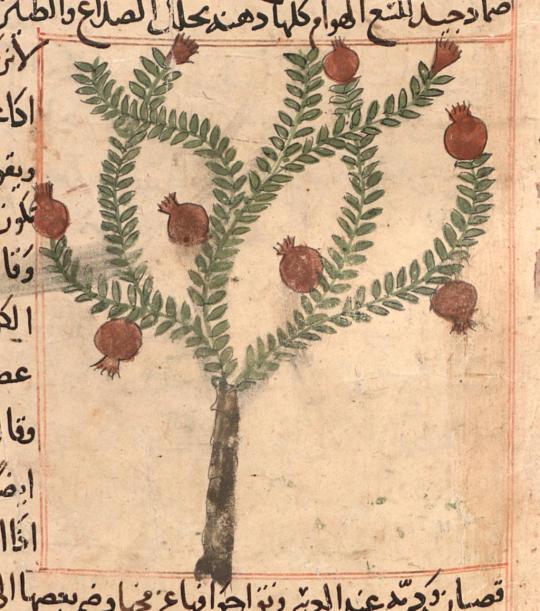

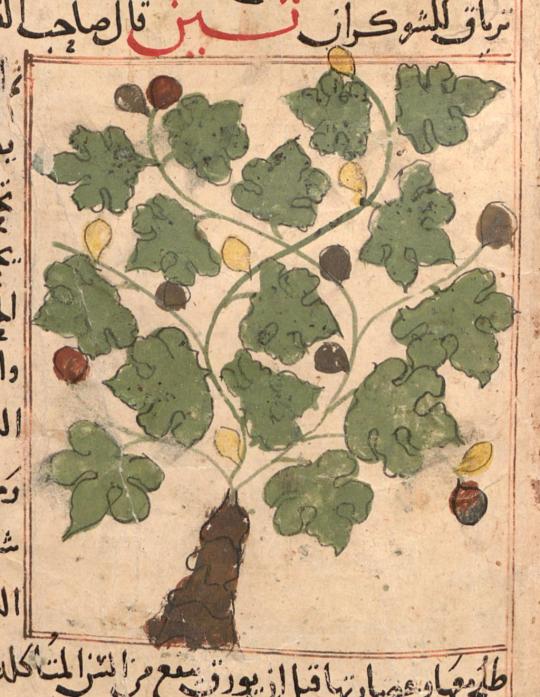
Fruit trees: etrog, pomegranate, mulberry, fig.
Zakarīyā Ibn Muḥammad al-Qazwīnī (1203–1283?), The Wonders of Creation (published Wasit, Iraq, 1280)
Library of Congress
317 notes
·
View notes
Text
Happy #InternationalCheetahDay!
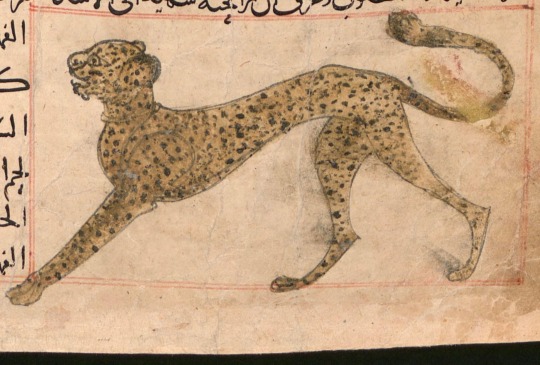
Here is the cheetah in Zakariya al-Qazwini's 'Aja'ib al-Makhluqat wa Ghara'ib al-Mawjudat (The Wonders of Creatures and the Marvels of Creation), an important work of Islamic cosmography which was probably first written in the 1260s, and for centuries after was reproduced across the Islamic world. This illuminated manuscript copy was made in Wasit, Iraq in 1280 CE and is the earliest known surviving version.
#animals in art#animal holiday#cheetah#feline#wild cat#Islamic art#Wonders of Creation#illuminated manuscript#illustration#natural history art#al-Qazwini#Manuscript Monday#International Cheetah Day
348 notes
·
View notes
Text
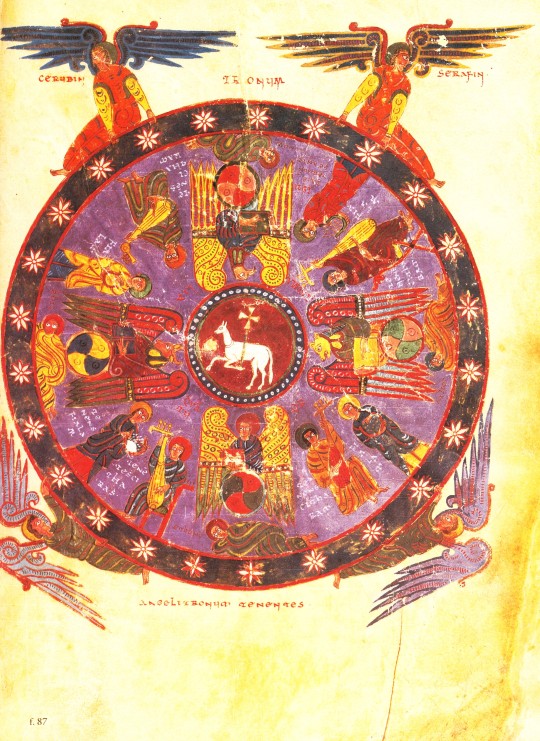

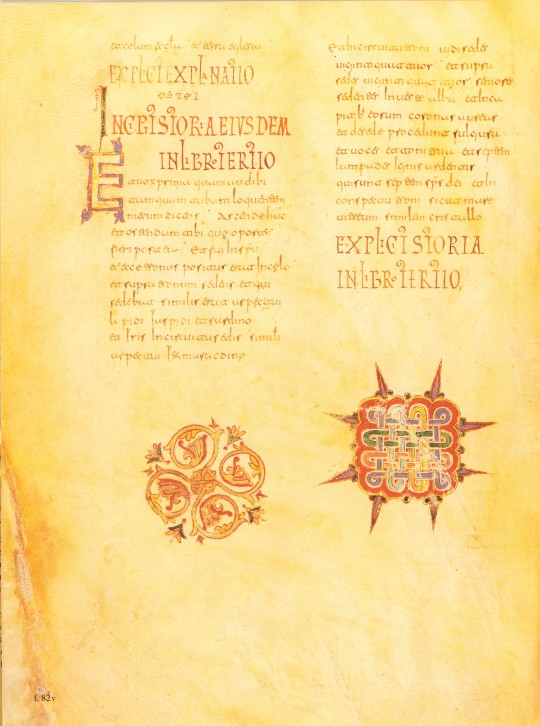
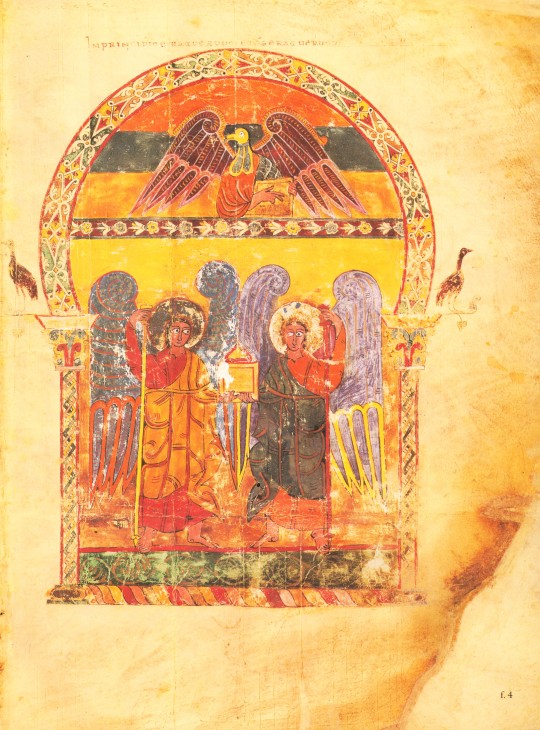




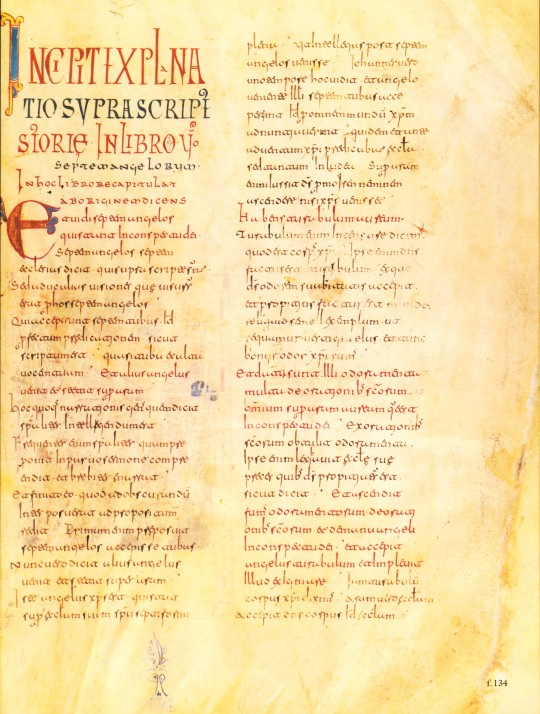
Welcome to Manuscript Monday!
In this series we will periodically focus on selections from our manuscript facsimile collection. Today we present selections from the Morgan Beatus Manuscript, reproduced as A Spanish Apocalypse, The Morgan Beatus Manuscript in New York by George Braziller, Inc. in association with the Pierpont Morgan Library in 1991. The original manuscript, made around 10th century CE at the scriptorium of San Miguel de Escalada in Spain by a monk named Maius, is the earliest surviving illuminated version of the monk Beatus of Liébana's commentary on the biblical Book of Apocalypse (also known as the Book of Revelation). The text of the Book of Revelation makes up the first part of the manuscript, and Beatus’s commentary comprises the second part. The Book of Revelation tells of the end-times in Christianity, during the final judgement of humanity by God. The story within this Biblical book was also seen by those living during the Latin medieval era as representative of the beginning of something new: God’s celestial kingdom. Due to this view of the book, many artists incorporated imagery from this part of the Bible in their work.
Produced in Al-Andalus, or Muslim-ruled Spain, the artistic style of this work combines both Muslim and Christian visual traditions to create a beautifully illuminated manuscript that supplements the commentary by the monk. This artistic style is known as the Mozarabic, which comes from the Arabic mustaʿrib, meaning ‘Arabicized’. Interestingly, this style of art can only be seen in Christian religious art and architecture from Spain at the time, as non-religious artistic objects made by Christians look so similar to Islamic versions of the same works that they cannot be identified as intentionally Christian. Some key Islamic artistic elements within the manuscript include buildings with horseshoe arches, intricate geometric and vegetal patterns as borders for larger images, and the large, bulging eyes of the illustrated animals.
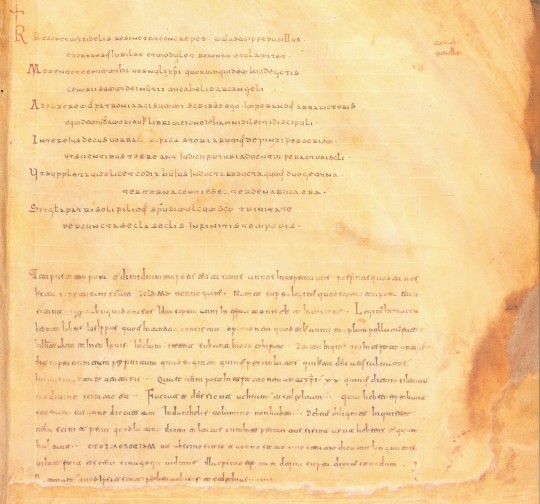
Another interesting aspect of this specific manuscript is the colophon at the end of the manuscript. It tells readers about the circumstances surrounding the creation of this book, including the maker, the patron, the year it was made, and an explanation about why Maius created the manuscript ("I write this . . . at the command of Abbot Victor, out of love for the book of the vision of John the beloved disciple. As part of its adornment I have painted a series of pictures . . . so that the wise may fear the coming of the future judgement of the world's end."). Colophons in medieval manuscripts are not usually as detailed, so the inclusion of all this information contributes greatly to the knowledge and history surrounding the Morgan Beatus Manuscript.
View more Manuscript Monday posts.
– Sarah S., Special Collections Graduate Intern
#manuscript monday#manuscripts#morgan library#morgan beatus manuscript#Beatus of Liébana#Spain#Christian art#Mozarabic#Islamic art style#facsimilies#Spanish art#Medieval art#Spanish medieval art#A Spanish Apocalypse#George Braziller#illuminated manuscripts#Sarah S.
132 notes
·
View notes
Text

A mad dog bites a man. Miniature (gouache, ink, and gold on paper) from an Arabic translation of Dioscorides' Materia Medica, with calligraphy by Abdallah ibn al-Fadl; written in 1224. Now in the Freer Gallery of Art, Washington, D.C.
#art#art history#illuminated manuscript#manuscript illumination#miniature#illustration#Dioscorides#Materia Medica#Middle Ages#medieval#medieval art#Arabic art#Islamic art#calligraphy#Abdallah ibn al-Fadl#gouache#ink and gold on paper#13th century art#Freer Gallery of Art
247 notes
·
View notes
Text


Marbled papers used for the cover on Isl Ms 710, Aḥmad al-Ṭabbākh al-Azharī's (أحمد الطباخ الأزهري) Arabic translation of an Italian mathematical compendium, which he titled al-Bahjah al-sanīyah fī mabdaʾ al-ʻulūm al-riyāḍīyah (البهجة السنية في مبدأ العلوم الرياضية)
In his preface, al-Ṭabbākh indicates that he studied Italian and prepared this translation in one of the schools established in Egypt under the educational initiatives of Muhammad Ali Pasha (r.1805-1848).
In his colophon, al-Ṭabbākh indicates that he wrote out this fair copy of his translation on the last day of the month of Dhū al-Qaʻdah 1239 (ca 27 July 1824)
Browse the entire manuscript here
#marbled monday#marbled paper#ebru#ebrusanatı#ابرو#ابر و باد#الايبرو#ابرو باد#manuscripts#Islamic Manuscripts#illuminated manuscripts#special collections#special collections libraries#special collections and archives#archives#libraries and archives#libraries#المخطوطات#المخطوطات العربية#yazmalar#yazma eserler#نسخه های خطی#مخطوطات#المخطوطات الاسلامية#manuscript culture#book arts#arts of the book#paper marbling#decorative paper#Egypt
77 notes
·
View notes
Text
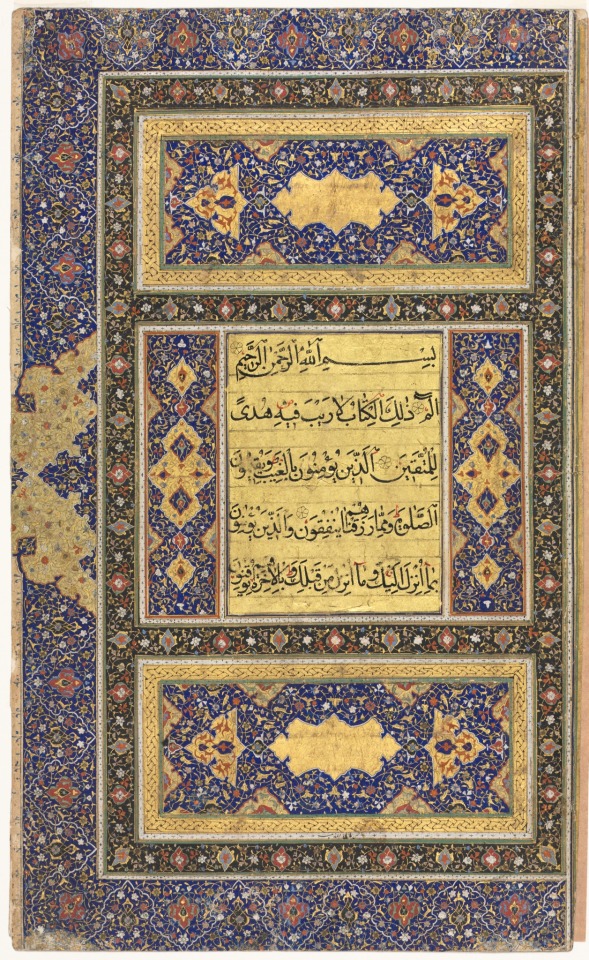
Qur'an Manuscript Folio (Recto); Left Folio of Double-Page Illuminated Frontispiece, 1500s. Afghanistan, Herat, Safavid period (1501–1722). Ink, gold, and colors on paper.
#art#16th century#quran#quraan#religion#islam#manuscript#illuminated manuscript#gold#safavid#afghanistan#Afghan#herat
17 notes
·
View notes
Text

Persian [created in Tabriz, Iran], The Shahnameh of Shah Tahmasp [The 'Houghton Shahnama']: fol. 165, The Court of Kayumars, ca. 1524-1525, Safavid period, illumination (The Aga Khan Museum, Toronto)
#persian art#islamic art#manuscript#illumination#book#art#painting#miniature painting#16th century#safavid
109 notes
·
View notes
Text

I encountered the funniest phrase I've ever read in a scholarly article yesterday and I had to share it with yall. I will now quote scholarly sources when assessing whether something is tiny, teeny, or teeny-weeny, thank you.
#the article was about micro signatures by artists in safavid islamic manuscript illumination btw#which is a really fascinating subject#and i can tell the author had a lot of fun with it too#bc they threw this in there lmao#the article is called 'who's hiding here? artists and their signatures in timurid and safavid manuscripts'#by marianna shreve simpson#art history#islamic studies#history#dark academia#silly academia#wait correction its a chapter from the book affect emotion and subjectivity in early modern muslim empires:#new studies in ottoman safavid and mughal art and culture#the title of their book is too long for just one tag#not teeny-weeny status
58 notes
·
View notes
Photo

Title: Album Leaf of Shekasteh-ye Nasta'liq
Calligrapher: attributed to Mirza Kuchak (Iranian, Isfahan, died 1846)
Date: first half 19th century
Geography: Made in Iran
Medium: Opaque watercolor, ink, and gold on paper
19 notes
·
View notes
Text
youtube
Watch the American Climate Leadership Awards 2024 now: https://youtu.be/bWiW4Rp8vF0?feature=shared
The American Climate Leadership Awards 2024 broadcast recording is now available on ecoAmerica's YouTube channel for viewers to be inspired by active climate leaders. Watch to find out which finalist received the $50,000 grand prize! Hosted by Vanessa Hauc and featuring Bill McKibben and Katharine Hayhoe!
#ACLA24#ACLA24Leaders#youtube#youtube video#climate leaders#climate solutions#climate action#climate and environment#climate#climate change#climate and health#climate blog#climate justice#climate news#weather and climate#environmental news#environment#environmental awareness#environment and health#environmental#environmental issues#environmental justice#environment protection#environmental health#Youtube
7K notes
·
View notes
Photo

A small collection of Illumination paintings, Chinese painting, and Islamic geometrical art.
#islamicart#islamic art#islamicpatterns#islamic patterns#islamic illumination#turkish art#ottomanart#tezhip#muzehhip#brush painting
3 notes
·
View notes
Text

Unknown, Illustration: A Nilgai
Single Leaf of a Nilgai
illuminated manuscripts; folios (leaves)
Reign of Shah Jahan (1037-1068 AH/AD 1627-1658)
1031-1059 AH/AD 1625-1650 (Mughal)
Walters manuscript leaf W.865, this painting of a nilgai (also called a blue bull or Boselaphus tragocamelus), which is an antelope indigenous to Asia, is attributable to the reign of the Mughal emperor Shah Jahan (reigned 1037-1068 AH/AD 1627-1658). north India
ink and pigments on paper
89 notes
·
View notes
Text
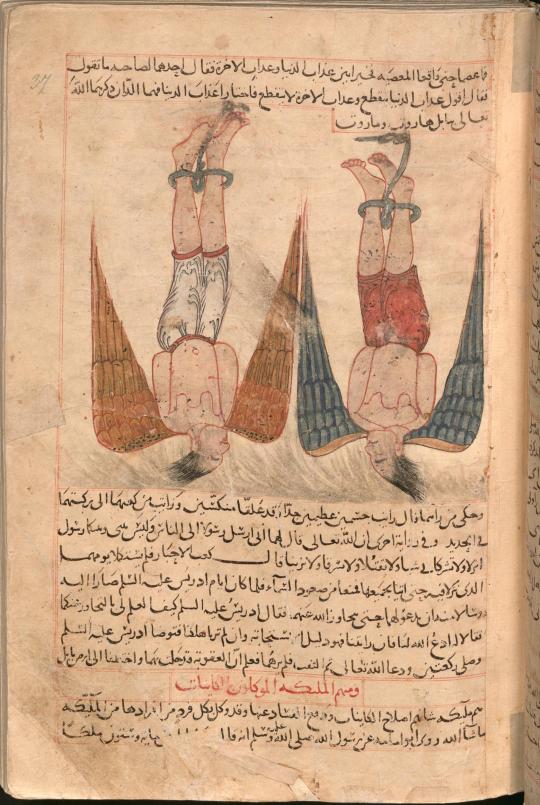
Zakarīyā Ibn Muḥammad al-Qazwīnī (1203–1283?)
Page from The Wonders of Creation (published Wasit, Iraq, 1280)
Library of Congress
35 notes
·
View notes
Text
For #WorldGiraffeDay:

Giraffe from a 15th c. Syrian illuminated manuscript of Kitāb al-ḥayawān (Book of the Animals) by the 9th c. naturalist Al-Ǧāḥiẓ/Jahiz.
Milan, Biblioteca Ambrosiana, Ms. Arab. B 54, f. 36
#arabic art#Islamic art#15th century#Middle Eastern art#Near Eastern art#giraffe#animal holiday#World Giraffe Day#illuminated manuscript#book art#book illustration#miniature art
148 notes
·
View notes